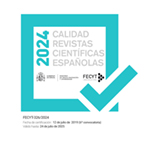“discamus naturales incurvationes rectificare”. "De ludo globi" I: A dialog between man and nature
Abstract
As its title indicates, Cusanus’ dialogue De ludo globi is built around a game. This game is composed of two elements: a slightly concave wooden ball and a surface on which nine concentric circles are drawn. The meaning of each circle is detailed in Book II of De ludo globi. For its part, Book I deals with the ball and its movement.
My paper seeks to find a systematic unity that can become a guiding interpretive framework for the dialogue, in the context of Book I. This systematic unity must also show that the work incorporates in the background another, dialogical dimension, in which we can read De ludo globi as a dialogue between man and nature.
With this in mind, I’ve divided the paper into three parts. First, (1) I will focus on the ball itself and its movement. Secondly, (2) I will present Cusanus’ approach to soul and body. This approach will then lead us to (3) a distinction between freedom and nature.
Downloads
Article download
License
In order to support the global exchange of knowledge, the journal Anales del Seminario de Historia de la Filosofia is allowing unrestricted access to its content as from its publication in this electronic edition, and as such it is an open-access journal. The originals published in this journal are the property of the Complutense University of Madrid and any reproduction thereof in full or in part must cite the source. All content is distributed under a Creative Commons Attribution 4.0 use and distribution licence (CC BY 4.0). This circumstance must be expressly stated in these terms where necessary. You can view the summary and the complete legal text of the licence.












